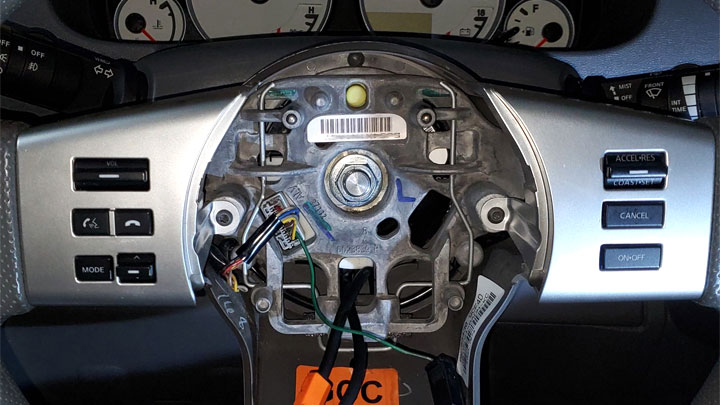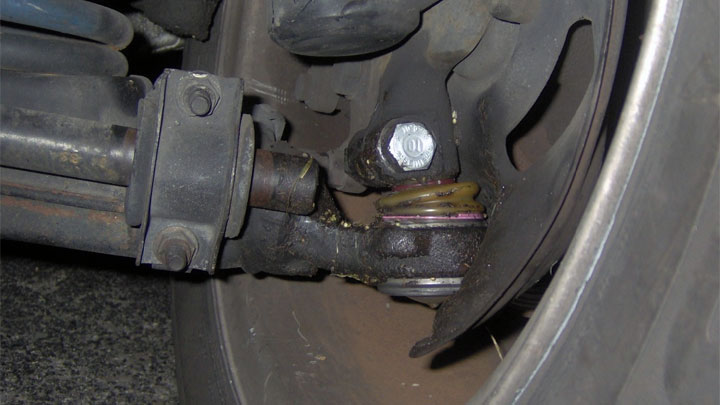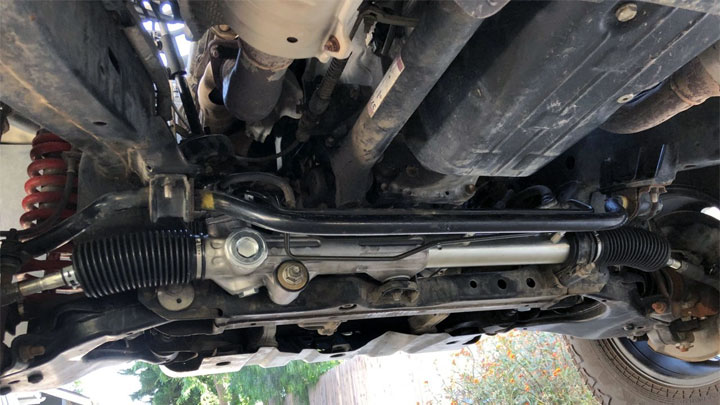Why Does My Steering Wheel Feel Loose? (5 Common Causes)
When you’re driving down the road, you know how the steering wheel SHOULD feel. So, when it’s starting to feel loose, you need to take notice. But what exactly does that mean, and more importantly, what do you need to do about it?
Let’s look at some of the most common causes of a loose steering wheel and how to correctly diagnose the issue so you’re not replacing stuff you don’t need to.

What Does it Mean When a Steering Wheel Feels “Loose”?
When a steering wheel feels “loose,” it means there is more play or movement in the steering than there should be before the wheels start to turn. A loose steering wheel often feels wiggly or turns more easily (or further) before the wheels respond.
This looseness or extra play can make the steering feel vague, less responsive, and reduce driver control. In addition, this lack of rigidity and precision in your steering wheel is often a sign of bigger problems with the steering system.
See Also: 4 Reasons Your Steering Wheel is Off-Center
Causes of a Loose Steering Wheel
There are several reasons your steering wheel might feel or be a little loose, and we’ve highlighted five of them for you here. Of course, once you know about what could be causing the problem, you can start troubleshooting to get to the root of the problem.
#1 – Loose Steering Nut

If the steering wheel doesn’t just feel loose but is loose, the problem is very likely a loose steering nut. The steering nut is behind/underneath the airbag, which physically holds your steering wheel onto the steering column.
It’s pretty rare for the steering nut to come loose, but it can happen. The good news is that it’s pretty easy to diagnose and fix if this is what’s going on!
#2 – Worn Tie Rods

Tie rods connect your vehicle’s rack and pinion to the hub, and it’s a big part of what turns the wheel. Over time, the ball joints on the tie rods can start to wear down, and this can introduce extra play into the steering system.
You’ll feel this in the steering wheel, and it can cause steering issues and cause other components to start to wear down.
When you have tie rod issues, you may also experience a steering wheel that shakes at high speeds or makes noise when turning.
#3 – Worn Ball Joints

A typical vehicle’s steering system has numerous ball joints throughout. Ball joints act as a buffer to allow movement without metal-on-metal contact from occurring. It’s a super effective component, but over time, ball joints start to wear down.
A typical ball joint will last between 70,000 and 150,000 miles. Once this starts to happen, you need to replace them, otherwise it can lead to a loose feeling in the steering wheel and damage to other steering components.
#4 – Worn or Damaged Rack and Pinion

The rack and pinion is a gear that rotates with the steering shaft and connects to a rack that moves from side to side as you turn the steering wheel. Typically, the rack connects directly to the tie rod ends.
A standard rack and pinion will last between 100,000 and 150,000 miles but it’s not immune to leaking or becoming damaged.
#5 – Worn or Broken Pitman Arm
The pitman arm connects the steering gear shaft to the steering linkage. It physically connects to the gear, and because of this, it’s an incredibly durable component.
Typically, a pitman arm will last the lifetime of a vehicle, but if one does start to wear down, it can make everything feel a bit loose and affect your steering.
Inspecting and Diagnosing the Issue
Now that you know a little more about what could be causing a loose steering wheel in your vehicle, it’s time to start troubleshooting to figure out exactly what’s happening. The first thing you need to rule out is if there’s actually a problem in the first place.
A little play in the steering wheel doesn’t necessarily mean there’s a problem. However, if the play exceeds more than one inch, it’s something you need to look into.
Unless it’s your first time driving the vehicle, you likely know what the steering wheel should feel like, and if it starts to feel different, it’s better to play it safe and have someone look at it for you.
How To Fix a Loose Steering Wheel
The first thing you want to do is rule out a steering wheel that is physically loose. If the steering column doesn’t move when the steering wheel does, or the steering wheel feels wobbly, the problem is very likely a loose steering nut. Once you rule that out, the problem is likely one of steering components.
Rack and pinions, ball joints, and tie rod ends all have unique symptoms that let you know there’s a problem, and the best thing you can do is independently troubleshoot each component to rule it out.
Whether it’s a leaking rack and pinion, a bad tie rod end, or faulty ball joints, we have a guide that breaks down the symptoms if any of these components aren’t working as they should.
The least likely issue would be the pitman arm, so don’t worry about this unless all the other components come back as working as they should.
Is It Safe to Drive With a Loose Steering Wheel
It is NOT safe to drive with a loose steering wheel. Whether the steering wheel is physically loose or there’s excessive play in the steering system that you can feel in the steering wheel, it’s simply not safe to drive your vehicle.
When this happens, your vehicle won’t react the way it should while you’re trying to turn, and this can very easily lead to an accident. But not only can it lead to an accident, but looseness in the steering system will very likely start to damage other components.
If you don’t address the problem quickly, a relatively easy repair could wind up damaging other components and leading to a far more expensive repair bill.
- P0521 Code (Symptoms, Causes, How to Fix) - Mar 22, 2024
- How to PROPERLY Clean 5 Types of Steering Wheel Materials - Feb 19, 2024
- What Should You Do If Your Check Engine Light Comes On? - Nov 6, 2023

Thanks, good useful info. So i’ll be driving down the street and my car will move to the left or right on its own. Any ideas?
thanks
It could be a bad alignment, it could be bad suspension components (like play in the bushings), it could be worn ball joints or something wrong with the steering linkage. Maybe something else. I would get it checked out.